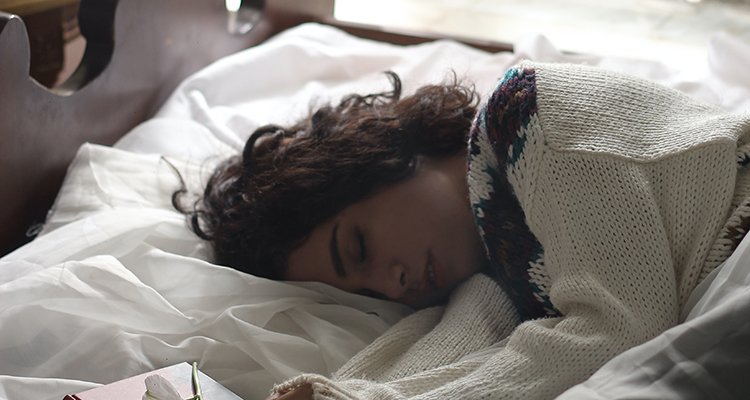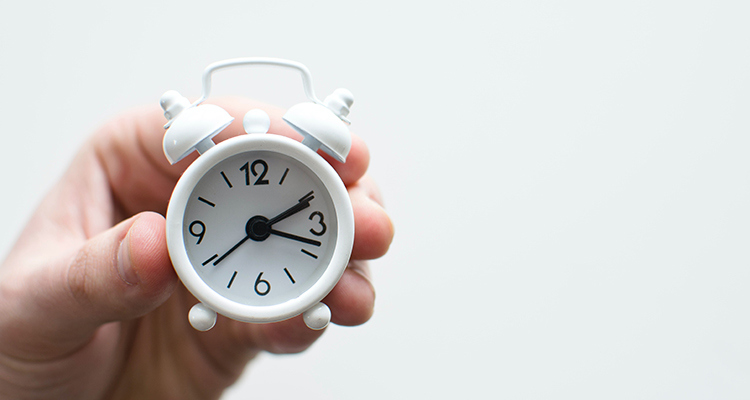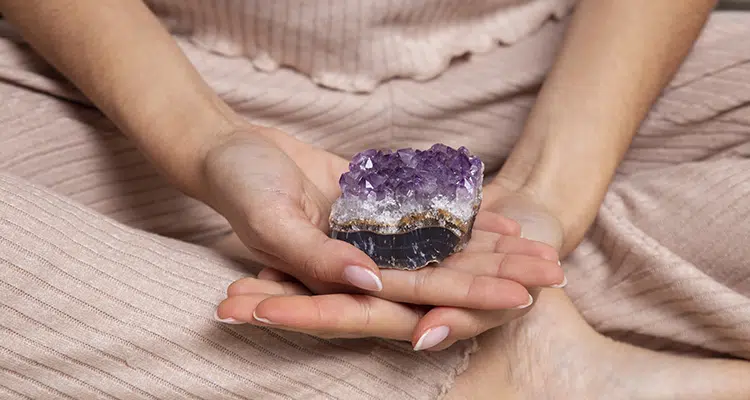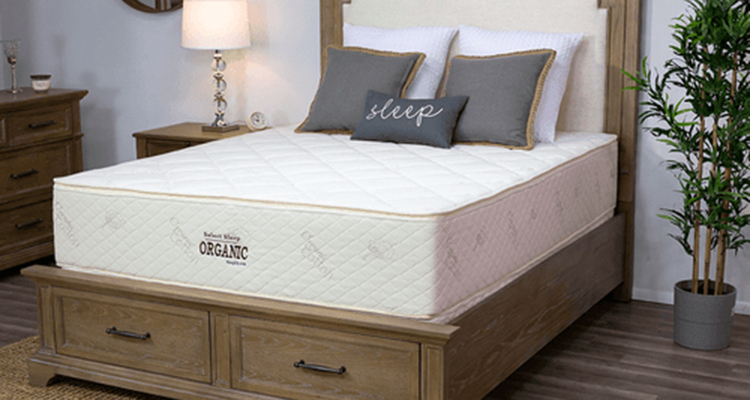A Deeper Look Into CBT-i Methods: Sleep Education And Sleep Hygiene
This article will take a deeper look into sleep education and sleep hygiene, two vital methods used during cognitive behavioural therapy for insomnia (CBT-i). We’ll cover all you need to know including the basics of CBT-i and what to expect from sleep education.

Content
What is CBT-i?
To get started we need to look at what CBT-i actually is. CBT-i is a structured, psychological therapy which helps you to address thought patterns and behaviours which may be causing or perpetuating your insomnia. Through CBT-i, you will learn to replace these maladaptive (meaning unhelpful) thoughts and habits, with positive, adaptive (meaning helpful) thoughts and actions.

The National Sleep Foundation explains that CBT-i: “focuses on exploring the connection between the way we think, the things we do, and how we sleep. During treatment, a trained CBT-I provider helps to identify thoughts, feelings, and behaviors that are contributing to the symptoms of insomnia.”
During CBT-i sessions a number of methods will be utilized to achieve these results. Each of these methods is used for a reason. They’re put together to form a comprehensive course of CBT-i, in order to get the best results for patients. One of the first methods used is sleep education and learning about sleep hygiene, which we’ll discuss in more detail in this article.
Once you’ve learnt about the connection between your thoughts and actions, and been able to change them for the better, you will be able to use these skills going forward. CBT-i will equip you with the tools you need to keep sleeping restfully in the long term. CBT-i is evidence-based and proven to be very effective in treating insomnia. In fact, it’s the first line of treatment recommended for insomnia.
What is sleep education and why is it important?
Sleep education provides a vital starting point in CBT-i. This stage of CBT-i will teach you about the basics of insomnia and the science of sleep. You will also learn things such as why sleep is important; how lack of sleep can affect you; how much sleep you really need; and how your behaviour can influence your sleeping patterns. This gives you a good base of knowledge to work from so that the therapy can be more effective. You might also hear sleep education referred to as psychoeducational interventions.

As you build this knowledge, you’ll understand the theory behind CBT-i methods so that you can understand why they will be used and how helpful they can be. This enables you to feel prepared for the rest of your therapy, as well as giving you more faith and trust in the therapy process because you understand the theory behind it.
Learning how your behaviour can influence your sleeping patterns allows you to start recognising personal behaviours which may be contributing to your insomnia. Some of these negative behaviours might seem obvious but they’re often harder to spot within ourselves. Even when we know some of our behaviours might be perpetuating the problem, we may not fully understand why this is the case and just how much changing these behaviours can help. This process creates a deeper sense of self-awareness.
You’ll learn about sleep hygiene and begin to change your habits through sleep hygiene training. Sleep hygiene refers to positive habits you implement to increase your chances of restful sleep. Sleep hygiene training involves stopping the maladaptive habits we mentioned and replacing them with positive behaviours to help you sleep. You’ll learn more about the specifics of sleep hygiene later in this article.
Although you may already know some of the knowledge you’ll gain during sleep education, it’s important it’s covered so you understand it fully. This 2020 article states: “One of the most important cornerstones of CBTI is education on normal sleep and the factors that affect both sleep quality and quantity.” Without sleep education, the other methods in CBT-i would not work so effectively. The National Sleep Foundation clearly says: “Providing information about the connection between thoughts, feelings, behaviors, and sleep is central to CBT-I.”
What will you learn during sleep education?
Now know what sleep education is and why it’s a vital part of CBT-i, let’s take a look at the topics which might be covered. Which topics are covered and in how much depth will depend upon how you access CBT, your already existing knowledge, and your individual therapist.

Why is sleep so important?
One of the core lessons you will learn is why getting enough sleep is so important, along with what happens when you don’t get enough sleep. While we all tend to know that sleep is vital, we might not be aware that lots of important jobs are being carried out while we’re asleep.
During sleep your mind is going over everything that happened during the day, forming memories and helping you learn from your experiences. New neural pathways are formed within the brain when you’re asleep which improve your attention; boost your creativity; help you learn; and enable you to make positive decisions.
When we’re asleep our mind and body also communicate to take care of our physical health. You might know that the rest we get during sleep is vital to give us the energy we need. However, hormones are released during sleep which also carry out vital jobs such as keeping our immune system healthy; regulating our blood sugar; helping us grow; boosting muscle mass; repairing cells and tissue damage; and keeping the systems within our body strong and functioning properly.
Of course, when we don’t get enough sleep these important jobs can’t be carried out. This can lead to all sorts of health problems. Consequences of not getting enough sleep include:
- Problems with memory
- Issues with concentration
- Problems learning and picking up new skills
- Changes in mood (such as irritability, frustration, and being short-tempered)
- Problems making decisions
- Fatigue
- The development of mental illness
- Reduced libido
- Difficulties functioning (often leading to problems at work or school)
- Lowered immune system
- Increased likelihood of obesity
- Increased risk of long term physical health conditions (including diabetes, heart disease, kidney disease, and high blood pressure)
Even though sleep is, of course, part of our everyday lives, it’s sometimes easy to forget just how important it actually is. Life can get busy and we forget to make sleep a priority. This part of sleep education helps us to gain perspective and refocus on getting the sleep we need.
How much sleep do we need?
Once you understand how important sleep is, you need to know exactly how much sleep you should be getting each night. It’s common to be consistently getting less sleep than you need, for many reasons. Sleep guidelines vary depending on your age, along with other factors such as your health, your activity level, and your lifestyle. During CBT-i you’ll be guided through working out how many hours of sleep you should be aiming for each night. You’ll also be guided through figuring out your ideal ‘bedtime’, meaning the time you should consistently be trying to go to bed.

Sleep cycles
You’ll also learn about the architecture of sleep, simply meaning how sleep is structured. During sleep, our brain moves between two states of sleep known as Non-rapid Eye Movement (NREM) sleep and Rapid Eye Movement (REM) sleep. NREM sleep is divided into three stages: N1, N2, and N3. Each stage of sleep plays an important role in the jobs carried out during sleep which we touched on earlier.
Our brain moves through these different stages repeatedly throughout the night, which is what we know as a sleep cycle. Once we fall asleep we descend down through the NREM stages of sleep, starting with N1 the lightest stage of sleep, progressing to N2, and finally reaching N3, which is the deepest stage of sleep. We then ascend back up through the NREM stages and into REM sleep. REM sleep is the lightest stage of sleep when we do most of our dreaming. It’s called REM sleep because our eyes move rapidly while closed during this stage. Moving through all of these stages is one complete sleep cycle.
Each cycle takes around 90 minutes. Once one cycle ends, another begins, and this continues until we wake up. Therefore, how many cycles we go through each night depends on how long we sleep. It’s important to learn about sleep cycles during CBT-i so that you can understand the importance of each stage. If you don’t sleep restfully and get the amount of sleep you need, your brain won’t be able to access all of the stages of sleep it needs to carry out those all-important jobs properly.
Sleep-wake regulation
Sleep-wake regulation refers to the systems that control when we’re asleep and when we’re awake. This regulation is controlled by our circadian rhythm and sleep-wake homeostasis. Our circadian rhythm is like our internal biological clock. It uses factors within our environment, like daylight and darkness, to determine when we should be asleep and when we should be awake.

Sleep-wake homeostasis uses a chemical called adenosine to do a similar job to that of our circadian rhythm. Levels of adenosine are released gradually throughout the day, making us gradually more tired as we reach night time. Just like melatonin, levels of adenosine are reduced as we sleep to get us ready to wake up in the morning.
It’s vital to understand how sleep-wake regulation works as this plays an important role in other CBT-i methods. It also enables you to fully understand the importance of sleep hygiene and why some sleep hygiene practices, even though they can seem simple, can be highly effective.
Basics of insomnia
It is, of course, important to learn about the basics of insomnia so that you can understand your sleep disorder. Insomnia is the most common sleep disorder and can be very difficult to live with. A sleep disorder refers to any condition which changes or disrupts your sleep. Insomnia can cause problems falling asleep, known as onset insomnia, and problems staying asleep throughout the night, known as maintenance insomnia. You might struggle with both onset and maintenance insomnia.
Insomnia can be short term which is called acute insomnia, or it can be long term which is known as chronic insomnia. Those struggling with chronic insomnia tend to be the people who reach out for help. Symptoms of insomnia don’t only affect you during the night. Lack of sleep can also make it difficult to function during the day, as we mentioned earlier.
What causes insomnia
Another important factor of learning about insomnia is learning about the causes of the disorder. This is particularly important in understanding how and why CBT-i works. There are a few scientific theories about the cause of insomnia which are known as ‘models of insomnia’. Two models, in particular, might be mentioned during CBT-i: The Stimulus Control Model and The 3P Model.

The 3P model was developed by a scientist called Spielman, so you may also hear it referred to as the Spielman Model. Under this model, three different factors beginning with ‘P’ can cause insomnia. We begin with predisposing factors: these are things which increase the chances of an individual developing insomnia, such as genetics. There are then precipitating factors, which are things that happen in your life to trigger the start of insomnia. This might include stressful events such as losing someone you love or a big change in your life. Lastly, there are perpetuating factors, which are things that keep your insomnia going or make it worse. Poor sleep hygiene habits might be included in perpetuating factors.
As well as these models of insomnia, you’ll learn about other things which might cause or influence insomnia. These might include stress levels; your working schedule; your age; other health conditions; chemical imbalance; menstrual factors; and so on. You’ll learn that stress around not being able to sleep can build, and the significant part this can play in exacerbating insomnia.
You’ll also learn about behaviours you may be engaging in which are fuelling your insomnia. These behaviours will also be addressed as you cover sleep hygiene. Once you struggle to sleep for a few nights, it’s common to start trying to cope with your fatigue and other symptoms in ways that might help in the short term, but actually perpetuate your insomnia in the long term.
This can include behaviours such as napping a lot during the day; drinking large amounts of caffeine to keep you awake; getting frustrated and stressed at night when you can’t sleep; and going to bed later and later. Sleep education will teach you why and how these behaviours can worsen insomnia. As you learn about all of these potential causes, you should be able to start pinpointing things that make sense to you in your own life. You’ll identify factors which could be causing your own insomnia.
Sleep hygiene
A vital part of sleep education is learning about sleep hygiene. We’ve already covered the fact that your own behaviours can influence how well you sleep. Once you know that, you begin to realise that you have the power to improve your sleep patterns. You’ll be taught about poor sleep hygiene, which are behaviours that could be making your sleep worse. You’ll then go over good sleep hygiene habits, so you can learn how to change your behaviour to improve your sleep.

The American Academy of Sleep Medicine explains: “Sleep hygiene consists of basic habits and tips that help you develop a pattern of healthy sleep. Disturbed sleep will often be caused by more than one thing that you do. To improve your sleep, you will need to improve all of these habits.”
Once you’ve learnt this, you’ll be guided through implementing good sleep hygiene: you might also hear this stage referred to as sleep hygiene training. We’ll cover some of the basics of what you will learn during the sleep hygiene stage of CBT-i.
Keeping a regular sleep schedule
You’ll learn about having a regular sleep schedule: this helps to regulate your circadian rhythm. This includes trying to go to bed at night and get up in the morning at roughly the same time, every time. Your mind and body will get used to going to sleep at that time, so you’ll begin to feel tired as you near your bedtime.
You’ll also be introduced to setting aside some time to ‘wind down’ before bed. This should be around 20 minutes to half an hour before you head to bed each night. During this time you should refrain from using your phone or watching TV, as this can actually wake you up more. Instead, you should do something relaxing such as listening to an audiobook; practising mindfulness; taking a bath; or doing some gentle stretching. This wind-down time adds to your bedtime routine and gives your brain cues that it’s getting near bedtime. As you do this consistently, you will begin to feel tired as you start your wind-down time.
Learning about the importance of the bedroom environment
Your bedroom environment plays a much more important role in how you sleep than you might think. You’ll be taught to keep your bedroom for relaxation, sleep, and sex only so your brain can make that all-important association with relaxation we discussed earlier.

You’ll also cover how to optimize your bedroom environment for sleep. This includes making your bedroom more comfortable. You can do simple things such as ensuring you have a comfortable bed and mattress; adding more pillows; adding a mattress topper; and using a comfortable blanket to make your bed itself more comfortable.
It’s also important you keep your bedroom at a comfortable temperature: the National Sleep Foundation states that around 65 degrees Fahrenheit is optimal. Since our circadian rhythm uses light as cues, it’s important to make the bedroom as dark as possible. You can do this by using blackout curtains, introducing dimmed lighting, or using an eye mask.
The noise in your bedroom is also important. We all know that loud noises can make it difficult to get to sleep and sudden noises can start us out of sleep. You could ask others in the home to keep the noise down while you sleep. If the noise in your environment is out of your control, you could invest in some earplugs while sleeping.
Eating and drinking habits before bed
What you eat and drink before you go to bed can influence how well you sleep. If you eat a heavy meal too close to bedtime, it can make you bloated, uncomfortable, or give you indigestion. If you go to bed hungry, you may struggle to sleep. You can combat these issues by eating heavier meals earlier in the evening, and having a light snack before bed if you often wake up hungry.

Consuming stimulants such as nicotine, caffeine, and alcohol can keep you awake, so it’s a good idea to reduce these as you near bedtime. Although we may know this logically, we may not be fully aware of just how much they can affect our sleep. You should also take into account how much liquid you drink before bed, as this can cause you to get up during the night to go to the toilet.
Cutting out naps
While short naps can actually be useful in boosting your mood, energy, and concentration levels, if you are struggling to sleep at night naps during the day can actually be detrimental. You’ll learn that if you’re struggling to sleep, napping can actually make you less tired at night and confuse your sleep-wake regulation. You’ll be encouraged to reduce naps or cut them out altogether.
Exercise during the day
Exercising during the day has many health benefits, including being proven to improve sleep. When we exercise, we tire our body and mind out in a healthy way, making us ready for sleep when we go to bed. Exercise also reduces stress and helps to promote relaxation, which aids with sleep.
Getting out in natural light
We’ve already talked about our circadian rhythm using light as a cue. By getting out in natural light as much as possible during the day, you’re actively helping to regulate your circadian rhythm.
Where to access CBT-i
We’ve covered all you need to know about sleep education and sleep hygiene in CBT-i, but the question is, where can you access CBT-i? There are a number of ways you can get access to this amazing therapy:

- Through your doctor
If you have insomnia, you could go to your doctor and ask them for help. They may be able to refer you to see a therapist for CBT-i. You might also be able to self-refer for therapy, depending on where you live. This may involve being on a waiting list.
- Privately
You could find a private sleep therapist and access CBT-i privately. This tends to be a costly option but allows you to get the therapy you want when you want it.
- Online
You could choose online sleep therapy. This option allows you to access therapy immediately, in your own home. It also tends to be a more affordable option.
You should choose whichever option you feel suits your lifestyle, preferences, and budget best. If you are struggling with insomnia, remember that you don’t have to struggle on alone. There are ways you can get help and sleep peacefully again.
References
National Sleep Foundation, (2020), “How Does CBT-I Work?”
Brandon Peters, MD, (2020), “How Cognitive Behavioral Therapy for Insomnia (CBTI) Works”. Very Well Health.
American Academy of Sleep Medicine, (2020), “Cognitive Behavioral Therapy”.
National Sleep Foundation, (2020), “Sleep Hygiene”.














